Ready to use your blender to create easy and delicious meals, snacks, smoothies, condiments, cocktails and treats? Grab our Ultimate Healthy Blender Recipes eBook Bundle - Now 62% OFF!
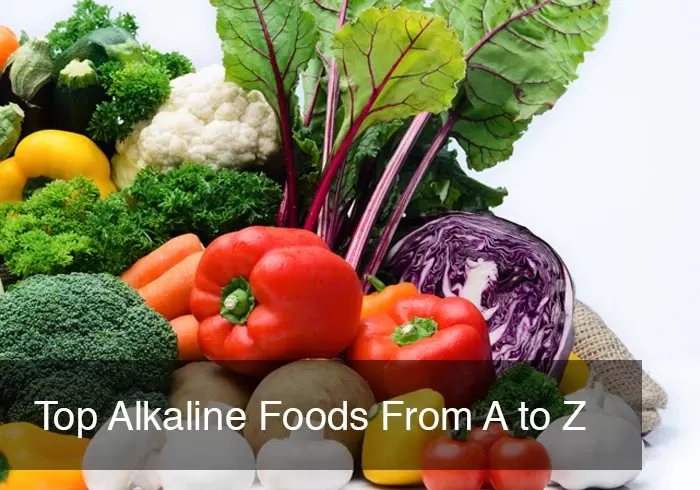
Top List of Alkaline Foods to Help You Maintain a
Healthy Diet and a Balanced System
If you’re looking for a list of alkaline foods including fruit, vegetables, beans, seeds, and herbs then look no further!
Many people often wonder which foods are alkaline after discovering the benefits of alkaline foods from Dr Sebi and other health professionals.
Dr Sebi was a famous herbalist who believed that mucus and acidity caused disease and they could actually be reversed with a high alkaline foods diet.
Why is your pH level important?
If you’ve ever experienced health issues with your digestive, circulatory, respiratory, skeletal, integumentary, nervous, excretory, muscular, reproductive or immune systems, your pH level might be the culprit.
PH level is a measure of hydrogen ion concentration in the body. It is measured on a scale ranging from 1 to 14, 7 being considered neutral. The body’s optimal pH level is slightly alkaline at 7.30-7.45. A reading less than 7 is considered acidic and greater than 7 is basic or alkaline.
An acidic pH is associated with a wide range of illnesses. Unfortunately, most people are too acidic, therefore an alkaline diet is important to reach our ideal pH of 7.30-7.45. It’s important to maintain a balanced pH by eating a high alkaline foods diet in order to bring the body back to vitality.
1. Almonds & Almond Milk
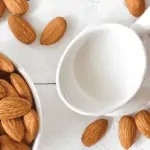
You don’t have to consume a lot of almonds to enjoy their benefits! Just a small handful per day will do. They also make an excellent on-the-go snack that you can take anywhere. Almonds are 27% calcium, 25% iron and 44% protein per 100 grams. Blender Babes recommends RAW almonds to maximize health benefits.
2. Amaranth
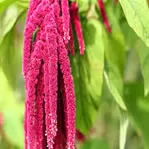
It can be prepared roasted, popped, boiled or added to other dishes, making it a wildly versatile grain.
3. Artichokes
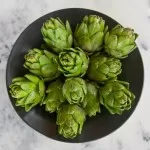
Aside from their alkalinity, they’re also loaded with antioxidants, helping to purify the liver and aid in digestive health. Artichokes produce 20% vitamin C, 12% vitamin K and 17% folate per 100 grams.
To prepare, boil until tender and season with salt, pepper and a squeeze of lemon for a nutrient-packed appetizer.
4. Arugula
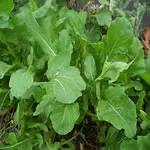
Many people associate dairy products with calcium, but this is a great non-dairy alternative to ensure you’re getting your recommended intake. Arugula provides 16% calcium, 47% vitamin A and 8% iron per 100 grams..
Don’t forget to add arugula to your shopping cart next time you are in the market!
5. Asparagus
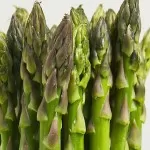
It’s also packed with antioxidants, nutrients and countless detoxifying properties. Asparagus has 15% vitamin A, 9% vitamin C and 12% iron per 100 grams.
It’s even been noted that asparagus has anti-aging benefits. This is reason enough for many people to start incorporating more of this incredible vegetable into their menu.
6. Avocado & Avocado Oil
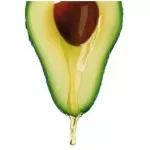
Avocados are rich in potassium as well as heart-healthy fats, and provide 17% vitamin C, 3% vitamin A and 27% fiber per 100 grams.
You can even use avocado oil in favor of other oils such as vegetable oil and olive oil.
7. Basil

Basil is one of the most beneficial herbs for an alkaline pH, plus it has flavonoids that help the body heal. Basil produces 175% vitamin A, 345% vitamin K and 18% calcium per 100 grams.
8. Beetroot
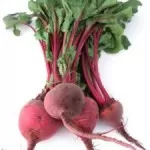
Beetroot has 8% vitamin C, 11% vitamin K and 75% folate (per 100 g). Add beetroot as a side, or add them as a salad topper.
Be sure to buy fresh and steam it, as the pickled variety has reduced nutritional value.
9. Broccoli
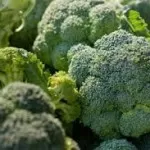
Broccoli is among those vegetables that has so much going on you just have to make the extra effort to get more of it into your system. Per 100 g, broccoli contains 135% vitamin C, 11% vitamin A and 4% calcium.
Some people eat broccoli daily as a way to maintain good health. You want to at least eat it several times a week, with 3 or 4 times being a good rule of thumb.
10. Brussels Sprouts
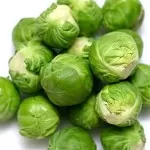
They have been shown to have the ability to help the body break down the acids caused by acid-forming foods, which in turn boosts your pH levels helping you get to or maintain an alkaline state.
Additionally, they’re also loaded with vitamins, minerals and fiber, making a great side dish to any meal. Brussels sprouts have 142% vitamin C, 15% vitamin A and 8% iron per 100 grams. It’s always best to buy Brussels sprouts fresh and steam them.
11. Buckwheat
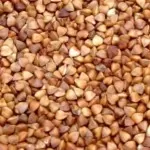
It’s also an alkaline food, allowing you to eat it without worrying if it is going to be acidic in your body. Additionally, it’s a surprisingly good source of protein and contains a good amount of iron. Per 100 g, buckwheat provides 12% iron, 2% calcium and 13.3 g protein.
If you’ve not used buckwheat in your cooking before, there are lots of recipes out there to get your feet wet.
12. Cabbage
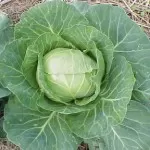
It’s very easy to cook cabbage improperly, so give it another try if it’s currently on your personal Do Not Eat list. Along with its alkalinity, it has also been found to be very effective in preventing, as well as reversing certain cancers. Add the high fiber content and the low caloric load, and cabbage is a winner for nearly every diet out there.
Cabbage contains 54% vitamin C, 3% vitamin A and 5% calcium per 100 g.
13. Carrots
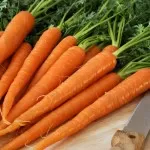
Besides the assist to your eyes, carrots also provide plenty of vitamins, fiber and potassium, making them an incredibly well-rounded veggie. Per 100 g, carrots have 336% vitamin A, 10% vitamin C and 3% calcium. So make sure to get your carrot fix once in a while.
14. Cauliflower
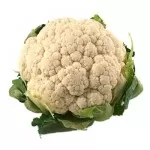
It provides a good amount of fiber and it’s an excellent non-fruit supply of vitamin C. Cauliflower contains 77% vitamin C, 2% calcium and 2% iron per 100 g. It’s also incredibly easy to prepare, but to hold as much of its alkaline nature as possible, eat it raw on salads or steam it until it’s tender and easy to eat.
15. Celery
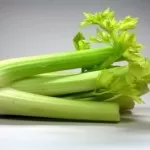
If you’re not big on crunching it up and getting the strands stuck in your teeth, pulverize it in your high powered blender while you’re making a green smoothie. Per 100 g, celery provides 4% vitamin A, 2% vitamin C and 2% calcium. It also works well in a fruit smoothie, adding a little bit of spiciness without overshadowing the fruit flavors.
16. Chia
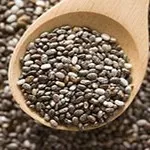
Chia has 20% iron, 20% calcium and 10% vitamin A per 100 grams. The great thing about chia seeds is that you can sprinkle them on just about anything.
Consider making a healthy soup from the veggies on this list and then sprinkling some chia seeds in for good measure. You can also make your own energy gel or add them to a smoothie to help tip it to the alkaline side.
17. Chives
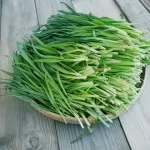
They can help the body because of their alkaline level, plus they do a good job of flavoring up your meal, so you can easily think of new ways to use them. Preparing them with new potatoes, which also make this alkaline list, can provide you with even more nutritional benefits. Chives contains 3% vitamin A and 3% vitamin C per 100 grams.
18. Cilantro
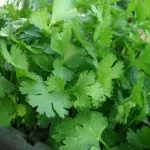
It’s tough to imagine that cilantro can make such a difference. Not only it is alkaline-forming, but it can also help with cholesterol, anemia and digestion. Per 100 g, cilantro provides 1% vitamin C, 1% calcium and 2% iron.
It’s simple enough to use in your cooking and you can even have herb gardens to grow it organically. You don’t have to eat massive amounts of it, since it combines nicely with other foods found on this list of top alkaline foods.
19. Coconut
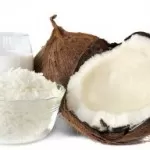
It’s sometimes tricky to think of ways to incorporate coconut into your life, especially since you’ll want to avoid the packaged coconut shavings used in baking. Instead, you’ll want to stick to things like coconut oil and fresh coconut flesh in order to reap the rewards.
Coconut has 11% iron, 4% vitamin C and 1% calcium per 100 g.
20. Collard Greens
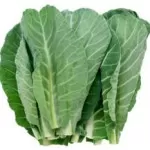
Add the whopping level of Vitamin A it contains and a number of other vitamins and nutrients and it’s just begging to be eaten. Per 100 g, collard greens contain 230% vitamin A, 20% vitamin C and 20% calcium.
21. Cucumber
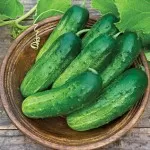
Cucumber contains 2% vitamin C, 1% vitamin A and 1% calcium (per 100 g). Keep the skins on to get the best results. However, if that’s too much for you a good way to split the difference is to just peel strips of the skin off, creating a pinwheel effect. This not only adds a nice presentation, but it also makes it healthier for you.
22. Cumin
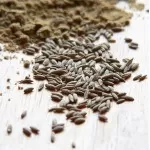
However, if you’re not very familiar with it, it’s time to include it in your cart the next time you’re out shopping. It’s a spice that can actually help the body neutralize the acidic foods you consume, which means that it’s going to create a doubling effect whenever used in conjunction with vegetables as well as other alkaline foods.
Cumin has 8% iron, 2% calcium and 1% vitamin A per 100 g.
23. Dandelion

Per 100 g, Dandelion provides 54% vitamin A, 32% vitamin C and 10% calcium. It’s an alkaline food, no doubt, and it also has a detoxifying effect on the body. Another major bonus is that it may help lower blood pressure levels.
24. Eggplant
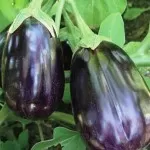
Eggplant is low in calories, it will help to fill you up and keep you feeling full, as well as assist in balancing out some of the acidic foods you eat everyday.
Per 100 g, eggplant contains 3% vitamin C, 1% calcium and 1% iron. And talk about having tons of recipes, it’s one of the more popular vegetables, with side dishes and entree recipes galore.
25. Endive

It may be a bit bitter for some palates, while others prefer the taste since it mixes things up from the usual spinach and romaine lettuce. No matter which way you eat it, whether in a salad or blended up in a green smoothie, you’ll be doing your body a favor.
26. Flax Oil & Flax Seeds
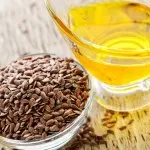
Per 100 g, flax seeds provide 46% iron, 37% calcium and 2% vitamin C. The seeds are easy enough to simply sprinkle on pretty much any dish, and since they don’t have much of a flavor of their own, you can add them without the worry of changing the dynamic of your meal.
They also blend easily into smoothies. You can use the oil for cooking, it will help nutritious veggies become even more nutritious.
27. Garlic

It’s a huge help in fighting cancer, or staving it off and it also helps to lower blood pressure levels. Each clove contains 2% vitamin C. Garlic also helps to detoxify the body, so you’re getting multiple benefits simply by adding more garlic to the mix. Try stir frying alkaline vegetables with a couple of cloves of garlic.
28. Ginger
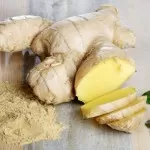
Ginger is a superfood, it has many detoxing properties. It provides 8 mg potassium per tsp. It can be included in a meal and know that it’s helping it to be alkaline for you.
29. Gluten Free Breads

While they might not be the alkaline powerhouse that cucumbers and spinach are, gluten-free breads are slightly alkaline so they will tip the balance in your favor.
30. Goat’s Milk

Goat’s milk is different than cow’s milk and it’s easier-tolerated by most people when compared with cow’s milk. Per 100 g, goat’s milk has 33% calcium, 10% vitamin A and 5% vitamin C. In addition, it reacts differently in the body than cow’s milk does, whereas cow’s milk is acidifying, goat’s milk is slightly alkaline.
So as it won’t make a huge difference in how alkaline you are, you can drink it without worrying about its acidity.
31. Grapefruit
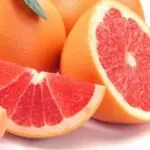
Half of a grapefruit provides 73% vitamin C, 2% calcium and 1% iron. So what else can this wonderkid do? Turns out it’s also alkaline.
Its low sugar count makes it a fruit you can love, even though it may taste sour and acidic, it has an alkalizing effect on the body when consumed.
32. Green Beans
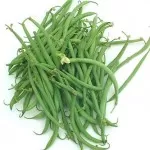
Per cup, green greens provide 30% vitamin C, 6% iron and 4% calcium. In addition, you’re also getting high amounts of iron and calcium, so there is plenty of reasons to eat them.
They’re super easy to cook and are found in many simple recipes.
33. Herbal Teas
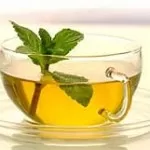
Black tea has an acidic effect on the body, the same with coffee, so you’ll want to ensure that you’re drinking things like ginger tea or chamomile tea.
Surprisingly, one tea that doesn’t make it on the alkaline list is green tea, since it contains caffeine means it will be acidic for the body. The surprising part is that green tea has so many antioxidants, it is often brought up as a beneficial beverage and cancer fighting agent.
34. Kale
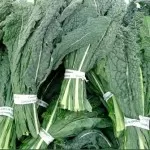
Often mentioned in the same sentence as spinach as well as other leafy greens, kale knocks it clear out of the park when it comes to its range of vitamins and minerals.
Consider its substantial supply of vitamin A and vitamin C, then add that you’re getting a calcium top-up, fighting cancer, as well as getting more fiber. Kale provides 206% vitamin A, 134% vitamin C and 9% calcium per cup. This superfood is one force to be reckoned with!
35. Kelp
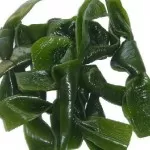
It also contains a nice combo of vitamins and minerals, and since it comes from the sea, it adds some variety to land-based veggies. Kelp has 15% vitamin C, 17% iron and 7% calcium per 100 g. So basically, you’re helping your alkaline efforts by consuming more kelp.
36. Khorasan Wheat
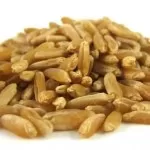
It also contains more iron and protein than regular wheat, 10% iron and 8 g protein per 68 g, so you’re getting more nutritional benefits, helping to keep you on the alkaline side.
37. Leeks
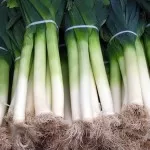
You should definitely consider using leeks more frequently because they are an alkaline food, they also possess a nice mix of nutritional value. They rank pretty highly in vitamin C for being a vegetable, so you’ll be helping to boost your immune system and stay healthy. Per cup, leeks contain 30% vitamin A, 18% vitamin C and 10% iron.
While not typically eaten on its own, you can steam it and mix it with other veggies on this list for a good pH boost.
38. Lemon
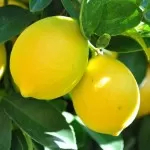
On the other hand, it produces an alkaline response by the body, and since it’s very low in sugar it’s not going to set you back the way sweet fruits do. It also has a cleansing effect on the digestive system, while it provides a good dose of vitamin C so it’s good to use more of it each day. The body obtains 51% vitamin C, 2% calcium and 2% iron per 100 grams.
39. Lentils
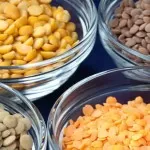
You’ll get the most benefit by cooking them at home rather than buying them in a can. Lentils provide 80% iron, 14% vitamin C and 11% calcium per cup. Just simply boil them until they’re al dente.
40. Lettuce
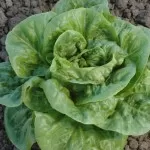
Lettuce has 2% vitamin C, 1% calcium and 1% iron per cup. You’re probably better off with romaine and other varieties that are also alkaline, as well as provide more nutrition into your system.
However the basic idea here is that if you’re eating lettuce of any kind, you’re getting phytonutrients and helping your body get to or stay on the alkaline side of the pH scale.
41. Lima Beans
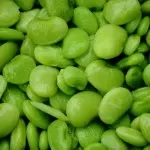
Per 100 grams, lima beans contain 61% vitamin C, 27% iron and 5% calcium. Another nice benefit is that once eaten, they’re alkaline-forming, so they will act to counter other acidic foods, or help you stay grounded on the alkaline column.
42. Lime
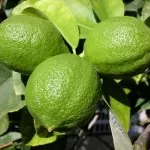
However, they move the pH level up when consumed, so it’s smart to start using more limes to dress up your foods or just add a slice to a glass of water. The body obtains 32% vitamin C, 2% calcium and 2% iron per lime. It is usually hard to eat limes the way you’d eat an orange! The best way to consume it is to use it as an ingredient in other dishes. You can also infuse some of your cooking with the flavor of lime.
43. Millet

Unlike wheat it’s a natural supply of both iron and protein, for intense, millet provides 33% iron, 2% calcium and 22 g protein per cup. So basically, you’re getting a better bang for your buck, while helping your body to stay off the acidic side of the pH scale.
44. Mint
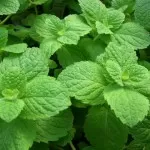
When considering the different herbs and spices that you can use in your cooking, it’s always beneficial to choose those that contribute to the alkaline as opposed to being acid-forming. Mint provides 3% vitamin A, 2% vitamin C and 1% calcium per 100 grams.
Try including a mint leaf or two to your smoothie for the special aroma, it gives it that fresh taste that even leaves your breath smelling better afterward!
45. Mung Beans
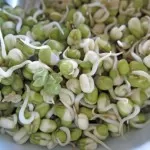
They also provide a good source of the antioxidant vitamin C, which has been proven to help strengthen the immune system. In addition, vegetarians can use them as a natural source of iron. Per cup, mung beans have 23% vitamin C, 5% iron and 1% calcium.
46. Mustard Greens

They also help detox the body and help maintain a healthy heart. The fiber they contain is an added bonus, which can help encourage weight loss, keeping you more healthy overall. Mustard greens provide 118% vitamin A, 65% vitamin C and 5% iron per 100 g.
47. Navy Beans
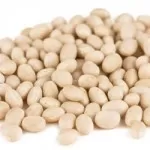
They have a remarkable amount of iron! They possess a decent amount of fiber and are a low-glycemic food, helping prevent spikes in blood glucose levels. Navy beans contain 117% iron, 48% calcium and 47% protein per cup.
They are also a very versatile food and turn up in several recipes either as side dishes or mixed with other ingredients in a vegetarian main course.
48. New Potatoes
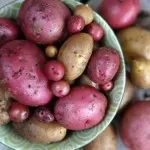
It really just means that they were picked prematurely. In addition to tasting better, they also keep the body alkaline or help it to get there by not being an acid forming food. Per 300 grams, new potatoes have 63% vitamin C, 12% iron and 3% calcium.
Give them a go and you’ll see just how delicious alkaline eating can really be. Add chives on top for even more flavor and alkalinity.
49. Okra
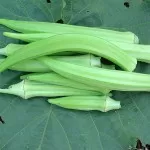
It’s also included in the family of foods that are alkaline. You can pretty much eat it to your heart’s content since it will only help your body stay or get alkaline. Okra provides 35% vitamin C, 8% vitamin A and 8% calcium per cup.
The only issue you might have is if you’re not familiar with ways to prepare it, but it’s worth getting up to speed and eating more okra.
50. Olive Oil
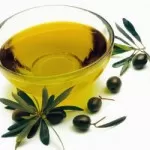
This is one oil that can be drizzled over a salad, preferably one made with as many alkaline vegetables as possible, or simply use in your cooking for extra health benefits. It’s great for weight loss while helping your body detox.
Olive oil contains 1.4 grams of monounsaturated fat and 9.8 grams of polyunsaturated fat per tbsp. You can even include it in your green smoothie for added thickness and consistency. It’s a great oil to keep on hand so you can use it whenever you can.
51. Onion
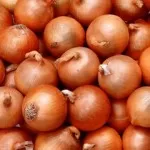
You can sauté them in olive oil and you’ll increase the alkalinity even more… but don’t overcook them. You will obtain 17% vitamin C, 4% calcium and 2% iron per cup. Onions are a standard in many recipes. Be sure you’re using fresh onions in order to get the most benefit from them.
52. Parsley
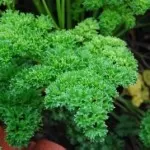
Blender Babes recommend to add it to your smoothie so you will end up with a fresher-tasting result, along with more vitamins and minerals than without it. Parsley provides 8% vitamin C, 6% vitamin A and 1% iron per tbsp. The good thing about parsley is that you can grow your own pretty easily at home so you always have it on hand.
53. Peas
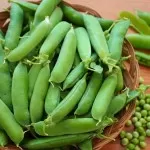
Peas usually hold their own in flavor and don’t really need anything special added to them. Try to skip the butter, which will only add an acidic food to this veggie side dish. Unbuttered peas are tasty, so give it a try if you haven’t. You’ll be cutting back on fat and calories!
54. Peppers
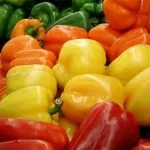
They’re super easy to cook with and taste best fresh. If you cook them, they stir fry up perfectly with onions and garlic in just a splash of olive oil. Of course like many of the products found on this list of top alkaline foods, they have numerous health benefits. They are also a great source of vitamin C and vitamin A. Green peppers provide 200% vitamin C, 11% vitamin A and 3% iron per cup.
55. Pomegranate
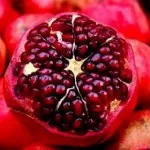
It contains a great amount of potassium and it’s also a good source of vitamin C. Each pomegranate provides 16% vitamin C, 3% iron and 400 mg potassium. It’s a great ingredient for a smoothie or as an on the go snack.
If you drink the juice just be sure that there isn’t any sugar added and that it isn’t mixed with high sugar fruits, or the alkalinity could be lost.
56. Pumpkin & Pumpkin Seeds

An even better part is that the seeds can also be used as a snack because they too are alkaline. If you’re still not convinced that you should start eating more pumpkin, just check out the remarkable amount of vitamin A it contains! Per cup, pumpkin provides 171% vitamin A, 17% vitamin C and 2% iron.
57. Quinoa
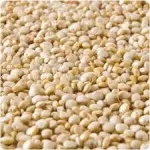
It is so versatile as well as easy to use. It has more vitamins and minerals than most other grains out there. It’s a seed and it’s also gluten-free. Per cup, quinoa provides 87% iron, 10% calcium and 22 g protein.
It isn’t overly alkaline, but just enough so that you aren’t taking a step back toward acidity, but instead taking a small step toward alkalinity. Next time you’re at the grocery store, grab yourself some quinoa and find some yummy recipes.
58. Radish
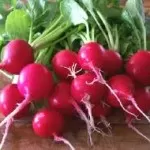
Radishes provide 29% vitamin C, 3% calcium and 2% iron per cup. Now add the fact that they help keep your body alkaline. If you’re not big on the taste, there are plenty of ways to cook them up, including the option to add alkaline herbs to them to change the taste of your meal.
59. Red Beans
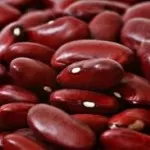
They boost iron levels, provide a good amount of calcium and are a great source of vitamin C. Their fiber levels aid in digestion and boost weight loss efforts. Red beans contain 14% vitamin C, 15% calcium and 68% iron per cup. They’re an amazing food to include in your diet.
60. Rhubarb
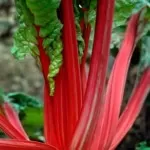
The amounts of calcium it possesses along with other antioxidants makes it worth getting to know better. Per cut, rhubarb provides 16% vitamin C, 2% vitamin A and 10% calcium.
61. Sesame Seeds
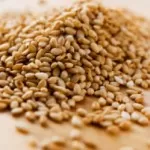
You can sprinkle them onto a salad made with alkaline veggies. You can also add them to your blender while blending up a green smoothie.
Just take a peek at the amount of iron these little ones contain along with a significant source of protein from such a small seed. Sesame seeds contain 65% iron, 20% calcium and 25 g protein per cup.
62. Soybeans
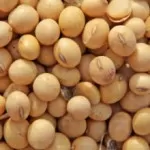
Additionally, they provide a non-dairy supply of calcium, they’re something that you’ll definitely need to include in your diet if you plan to cut back on meat and cut out the dairy to stay alkaline. Per cup, soybeans have 19% vitamin C, 52% calcium and 162% iron.
63. Spinach
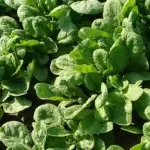
Spinach is the most well-known leafy green for its health benefits.
Spinach contains 14% vitamin C, 56% vitamin A and 4% iron per cup. No matter what form you eat it in, you’ll be helping your body go alkaline.
One of the best ways is to buy baby spinach to use as a base for a yummy salad. Since there are so many alkalizing vegetables to include, it’s super easy to create a salad that will send your pH levels rising.
64. Sprouts
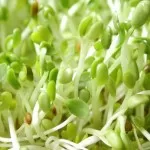
You do not want to miss out on their alkalizing benefit, as well as all the nutrients, enzymes and protein they also provide. Per cup, sprouts contain 10% vitamin C, 1% calcium and 3% iron. One great feature is that their easy to find, typically found in most grocery stores and supermarkets.
65. Squash
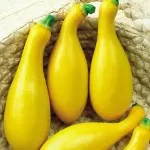
Squash makes excellent side dishes, there are even many vegetarian recipes out there that can teach you how to turn squash into your main course, with other vegetables standing in as side dishes. It contains loads of vitamin A and vitamin C. For instance, a cup of butternut provides 298% vitamin A, 49% vitamin C and 7% calcium.
66. Sunflower Seeds
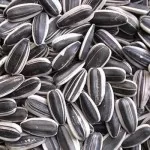
Sunflower seeds can be a source for healthy fats. It also provides protein and iron, which is important if you plan on cutting back on acid-forming meats. Shelled sunflower seeds contain 1% vitamin C, 11% iron and 6 g protein per ounce.
67. Sweet Potato

Sweet potato is alkaline. In addition to their great taste you will get all its benefits including a significant amount of fiber and a good dose of vitamin A, a powerful antioxidant. Sweet potatoes provide 369% vitamin A, 5% vitamin C, 4% calcium and 4% iron per 100 grams.
68. Swiss Chard
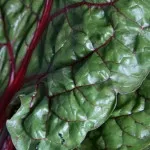
It has a distinctive, bitter taste, one that might not be appealing to you at first but one that you might actually crave after trying it a few times. Also, it plays well with other greens like spinach and kale to mix things up! Swiss Chard contains 18% vitamin C, 4% iron and 2% calcium per 100 g.
69. Thyme

In some cultures, this is the primary seasoning used in their dishes. One benefit of thyme is that it helps out the respiratory system. It is also consider a super-spice, with antioxidants and plenty of nutrients for such a small herb. Thyme has 2% vitamin C, 1% vitamin A and 1% iron per tsp.
70. Tofu

Tofu contains 3% calcium, 5% iron and 5 g protein per slice. Don’t worry, you won’t have to go completely vegetarian to get the same benefits. Many alkaline diet plans allow you to consume some acidic foods daily.
71. Tomato
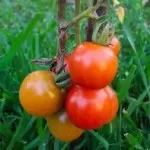
In addition to all that, they’re an alkaline forming food! That’s just one more reason to start eating more tomatoes. A medium sized tomato provides 26% vitamin C, 1% calcium and 2% iron.
You might think tomato is acidic since it triggers the same sour taste buds as a lemon does, but it’s not acid forming. It actually helps to raise your body’s overall pH.
72. Watercress

It has its own unique flavor that you may prefer over some of its cousins but it ranks pretty highly on the alkaline scale with regards to the impact it has on your body. Per cup, watercress provides 32% vitamin A, 24% vitamin C and 4 % calcium per cup. Watercress has even demonstrated the ability to help repair damage to DNA. This can be a huge help in preventing and reversing cancer.
73. Wheatgrass
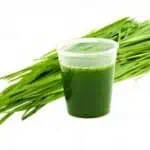
It’s a very powerful source of alkalinity for the body. Often you can conveniently find it in supplemental form, you can easily mix it with water and drink it. Some people shoot back a daily glass of wheatgrass juice as a form of insurance that their bodies are getting enough alkaline forming food. Per 3 g, wheatgrass provides 44% iron, 30% vitamin A and 12% vitamin C.
74. Zucchini
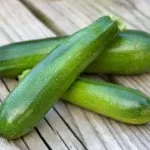
Zucchini contains 35% vitamin C, 5 % vitamin A and 2 % iron per cup. There are so many zucchini recipes available, but steaming and eating them by themselves is the way to get the most benefit. It helps to lower cholesterol levels and for men it’s good for the prevention of prostate cancer.
Maintaining a healthy diet is key for a long, healthy life.
We hope this list of alkaline foods provides you with the knowledge you need. It will help you start and maintain an alkaline base for your overall diet.
Start incorporating more of these high alkaline foods that provide your body with necessary vitamins and nutrients into your recipes. Your meals will not only be delicious but also full of beautiful, colorful nutrition!
If you’re interested in an alkaline foods meal plan I can help! Check out Eat Smart, a Customized 3 Month Meal Plan Strategy.





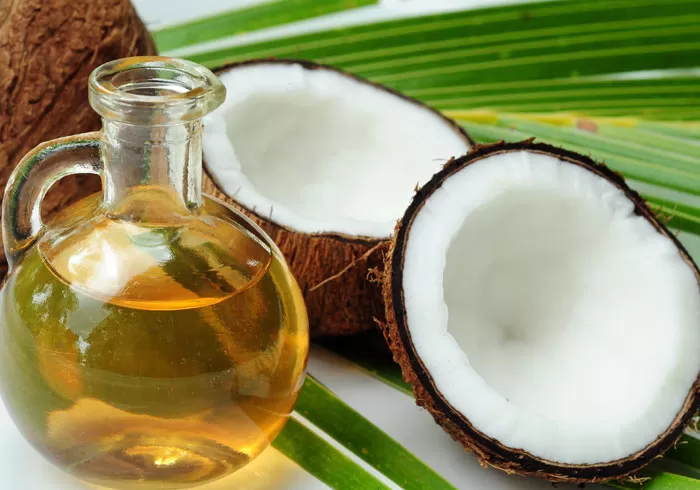
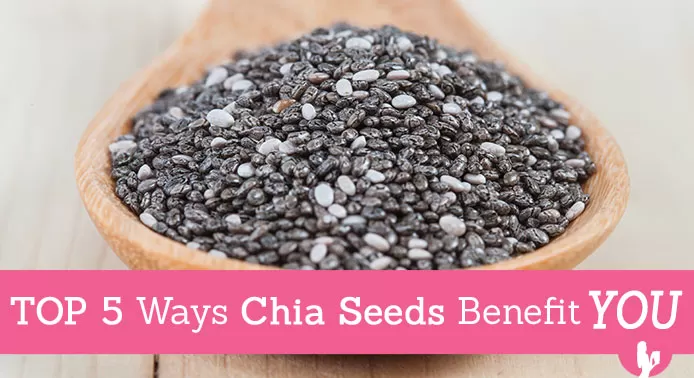

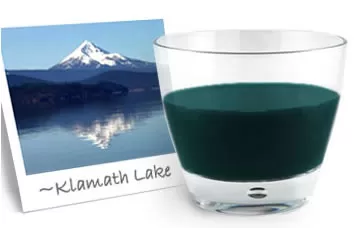
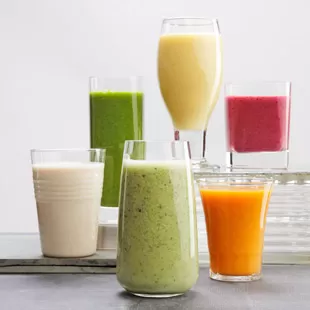
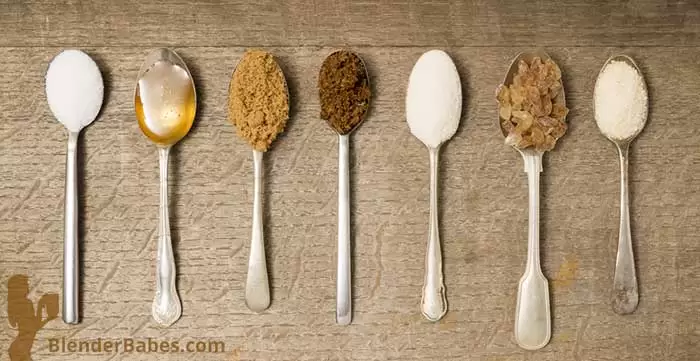
Was told I had high acid level. What can I do now?
Hello Obioha! You will want to focus on increasing your intake of fruits and vegetables, and as many things from this list of alkaline foods to start! Also avoiding caffeine and alcohol as much as possible. Also try eating smaller meals!
If you would like to discuss how you can live healthier, feel free to schedule a free health consult here.
I hope that helps!
Tarashaun
Very informative. Thank you.I will start trying the ones I can lay my hands on.
10. Brussels Sprouts … “Time to get PAST it” and not passed.
Great article, very helpful.
Great catch thank you! I have fixed it 🙂 Enjoy the best alkaline foods as much as you can! ~Tarashaun
Merry Christmas and yes I wrote a whole lot of info down. Thank you for paying attention to detail with the Green Lima Bean and others. Betsy
Thank you! I like it that you put the foods in a list format. Helpful.
You’re so welcome! 🙂
Nice article 🙂
I just love all the info, as I also suffer with high alkaline, very helpful for my diet, although I eat almonds, beet, spinach, Zucchini, broccoli, Tomatoes, sweet potato, sun flour seeds, lettuce, cucumber, celery, carrots, asparagus, Olive oil, Avo’s, broccoli, nearly every day. I had breast cancer October 2012, had all my blood tests this week, scans and xrays. Very blessed, my blood count came down and all other tests clear. Love to eat healthy and my husband also eats healthy, had colon cancer 13 years ago, wears a stoma bag, but cancer free! Thank you for this info, just love to know and learn more every day
great list to have handy
broccoli, beans, asparagus, lemon, lime – so many